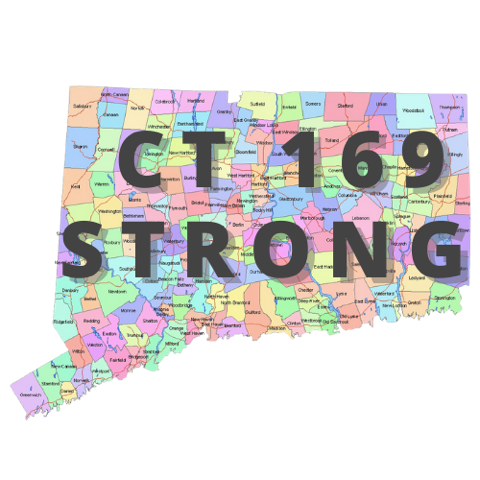
“The stated goal under the bill is to develop a ‘transit oriented community’ with a minimum housing density of 20 units per acre.”

Alfred Branch, Patch Staff
Dear Editor-
Sitting at the Cannondale MetroNorth train station in Wilton, one can not help but get a sense of a bygone era. Just feet away from the station, the ancient rusted-out pair of the Mobilgas gas pumps sit long idle, the one room school house dating from 1872, now serving as a quaint local restaurant, has only the memories of children sitting dutifully at their desks awaiting teacher’s lessons, and the Cannondale General Store continues selling convenience items, just as it has since the Civil War.
While one can be forgiven if they get a feeling of a sleepy historic village at the station, waiting for the MetroNorth train at the Cannondale train station on Sunday night after meeting friends for dinner, one will need to wait 3 hours and 46 minutes between trains.
Its difficult then to reconcile the “Work Live Ride” bill HB-6890 which designates Wilton as a “qualifying rapid transit community” subject to its dense housing development mandates by virtue of it only being on a rail spur served by an old diesel powered train that is as much as a 114 minute train ride away from Grand Central Station.
In fact, unless Wilton “opts-out” of HB-6890 and forgoes certain discretionary infrastructure funds, it will be required to submit to the override of its zoning for a “reasonable” area within the 500 acres around its train station. The stated goal under the bill is to develop a “transit oriented community” with a minimum housing density of 20 units per acre. The bill mandates this onerous housing density and, although most planners and zoning boards seek in true transit oriented development to balance commercial, leisure and residential use development to create vibrant towns and communities, HB-6890’s sole focus and the essence for a town’s compliance is to submit to the onerous housing density metric that the bill unilaterally imposes.
Local planning and zoning commissions, of course, are very well familiar with transit oriented development, as it’s certainly not a new concept and has formally been part of generally accepted town planning practices for over at least 30 years.
One need only look to the success of towns like Norwalk, Darien and Stamford that have made train stations the center of vibrant, mixed use, commercial, leisure and residential development, all under the auspices of current local zoning rules that encourage thoughtful and vetted mixed use development and land use. But thoughtful mixed use planning is not the point of HB-6890. For if Stamford does not “opt-out” of the provisions of HB-6890 (and therefore chooses to forgo critical infrastructure funding — including monies for brownfields remediation), it will be required to build at a minimum housing density of 30 units per acre for a “reasonable” amount of the 500 acres around its train station.
Under HB-6890, the “reasonableness” of the size of the transit development zone will be administratively determined by a Hartford statewide government “coordinator” and not by the local Planning and Zoning Commissions; and most insidious is the fact that real estate developers can then build to maximize housing density to optimize profit, without the local commissions deciding on the best mix of residential use, leisure use and commercial use; nor with any local control on the scale and size of development that best meets the needs of the local community.
Sound city and town planning requires input from local community constituents in order to ensure all voices are heard on how to protect infrastructure, natural resources and how our vibrant and active communities are shaped for all community members. This is inclusive and thoughtful planning by understanding and listening to important localized input; HB-6890 eliminates public hearings and community input in favor of “as of right” building development.
Logical bills should have a rudimentary understanding that while Wilton and Stamford both do indeed have MetroNorth train stations, each community’s housing needs and solutions are as vastly different as the Wilton 3 hour 46 minute Sunday night wait at the train station (114 minute ride to NYC) and Stamford’s one hour wait for a train on a Sunday night (55 minute ride to Manhattan).
Merely declaring that certain towns are a “qualifying rapid transit community” in a bill and then subjecting those towns to HB-6890’s potential zoning override is a deft political sleight of hand to ensure only that local zoning and planning input is totally gutted and made irrelevant for the “reasonable” area within the 500 acres around the train station — however the statewide “coordinator” might define what “reasonable” is for any specific town or city. Clearly, what is proposed in HB-6890 is not real or thoughtful transit oriented development in any true sense of the word. So, then let’s just all call “Work Live Ride” HB-6890 for what it actually is: a state imposed zoning override for the enrichment of corporate landlord interests and housing developers.
Maybe “Build Big & Lease” is a much more accurate name.
Sincerely,
Kirk Carr, Ridgefield
Alexis Harrison, Fairfield
Peter McGuinness, Darien
Tara Restieri, Greenwich
Maria Weingarten, New Canaan
CT169Strong Members
